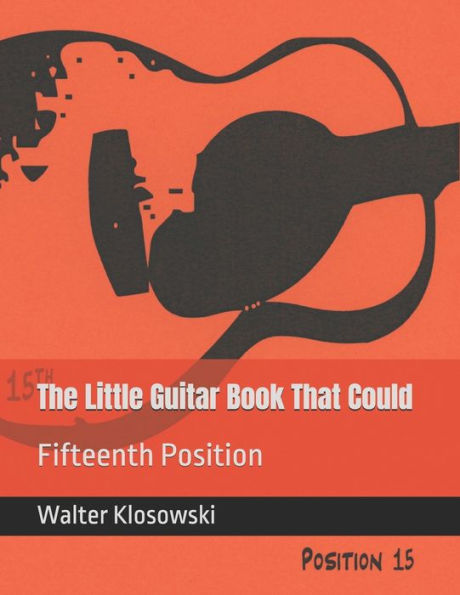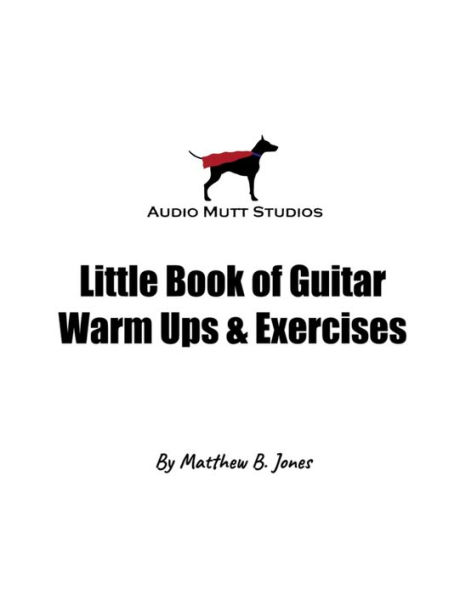Home
The Little Guitar Book That Could: Fifteenth Position
Loading Inventory...
Barnes and Noble
The Little Guitar Book That Could: Fifteenth Position
Current price: $14.95


Barnes and Noble
The Little Guitar Book That Could: Fifteenth Position
Current price: $14.95
Loading Inventory...
Size: OS
*Product Information may vary - to confirm product availability, pricing, and additional information please contact Barnes and Noble
This LITTLE GUITAR BOOK THAT COULD showcases the C A G E D chord and scale sequence exclusively in the FIFTEENTH POSITION, for all to see, use and reference. But, before thumbing through this book, there's some subject matter that the guitarist may need reminding of...even though he or she may have played for years. For example, in this book, six consecutive frets is what constitutes a guitar position, and each position spans a full two octaves plus a perfect fourth so long as the guitar remains in standard tuning. Also when in the FIFTEENTH POSITION the second and third fingers on the fretting hand are to remain stationary in their respective frets or "slots", for the most part, as their stationary qualities are the very thing that allows the first and or fourth finger to stretch or slide to their notes in the outermost frets. On the other hand, literally the picking hand, a very useful and important picking pattern occurs down by the sound hole or bridge, where that hand predominantly resides. This pattern involves every other string, and is best evidenced when the center most C A G E D main root notes are plucked alphabetically, starting with the A note found on the first or thinnest guitar string. Start by picking the A root there (first string, third finger); then pick the C (third string, third finger); then the D (fifth string, third finger); move onto the E (second string, third finger); the G (fourth string, third finger), and conclude with the low A (sixth string, third finger). The one-three-five-two-four-six string pattern naturally fits the picking hand and is looped, forwards or backwards (six-four-two-five-three-one) as the A's on the first/sixth string(s) are deemed interchangeable octaves. Moving on, there are also three important music vocabulary terms used in this book, those three being main root notes, octaves and unisons. Here, main root notes represent a specific set of root notes that fall or cluster underneath the, again mostly stationary second and third fingers of the fretting hand. Typically, both the second and third fingers are involved in fretting them, however in this position the third finger is the only finger used. Even so, once the placement of each main root note is actually memorized, the attention then moves to their matching octaves, which is defined as the interval between one musical pitch and another with half or double its own frequency. Some correctly call the interval a "perfect octave", and in guitarland, octaves are usually "one string one fret away". This handy fact helps memorize their location on the fretboard straightaway, even though, occasionally, two strings and or two frets are involved (the same concept applies in that there will be some sort of string skipping.) The last term used is unison, which occurs when two or more musical notes happen to sound the exact same pitch. In guitarland this usually means "same note different string or fret", and the unison in question typically occurs in the given position. After showcasing all the above C A G E D material, THE LITTLE GUITAR BOOK THAT COULD for the FIFTEENTH POSITION then concludes with an A B C D E F G A or alphabetical appendix, in which the C A G E D material is thus reorganized to include the B and F material. And even there the book's uncomplicated, straightforward "picture worth a thousand words" format allows one to take full musical advantage of the material straight away. You'll have fun discovering some fresh perspectives on the same old same old, while also adding some new twists and turns to your own fingering technique, plus THE LITTLE GUITAR BOOK THAT COULD also contains copious amounts of manuscript and fretboard paper too, for jotting down any technical or compositional aspirations you may get from your own musical ideas. As always, thank you very kindly for welcoming THE LITTLE GUITAR BOOK THAT COULD into your library of fretboard knowledge needs..Enjoy!


















